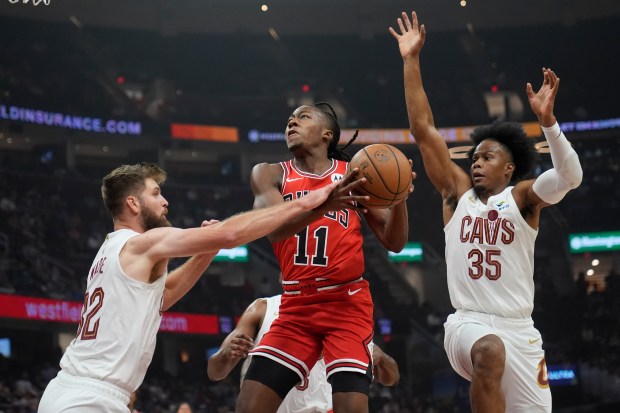After barely two weeks of training camp, the Chicago Bulls already have latched on to a mantra: playing fast.
That’s the goal, and it makes sense on paper. Speed will be a necessity for this Bulls roster, which is severely lacking in size. And after several seasons of sluggish monotony on the offensive end, the team is due to shake things up.
But can the Bulls actually pick up the pace? And will it be enough to balance the offense?
This isn’t the first time coach Billy Donovan has faced those questions. At this same point of the preseason last year, Donovan also was preaching pace as an antidote for mounting offensive concerns. But within weeks, any hopes of an up-tempo shift faded.
The Bulls finished last season with the third-lowest pace (96.94) — a statistic that measures how many possessions a team averages in 48 minutes. They scored the third-fewest points off the fast break (18.1), instead anchoring their offense around the methodical midrange game of DeMar DeRozan.
“It’s just the way our team was,” Donovan said. “I made the comment last year that we had to play faster. I’m all for that. But our team wasn’t set up like that to play really fast. As much as you want to go up and down, I think you have to play to your personnel.”
The methodical nature of the offense last season had its perks — for instance, the Bulls posted the third-lowest turnover percentage in the league. But without DeRozan, it makes sense that the Bulls need to adapt to a new offense.
The Bulls are better equipped to up their tempo on the break. Zach LaVine is built to play above the rim and off the bounce. The addition of guard Josh Giddey — combined with the potential return of guard Lonzo Ball — brings a sharper eye to the open court, giving the Bulls a boost at every change in possession. And a bigger diet of playing time for younger wings Julian Phillips and first-round pick Matas Buzelis will only lead to a more frenetic pace of play.
Donovan wants to lean into this new roster composition, running drills with shortened shot clocks to hone quicker decision making throughout training camp. For younger players such as Ayo Dosunmu, this shift in offensive focus is a welcome addition.
“Using my speed, getting into the paint, using my change of pace, creating shots for myself, my teammates, getting to the free-throw line more — I think that’ll help,” Dosunmu said. “We’re going to wear them out in the first two minutes — not the first two minutes, but you know, as the game continues to go. I think that that style of play benefits myself and the team.”
When teams talk about playing fast, it’s easy to focus on scoring in transition. But no matter how fast players run on the break, the bulk of any team’s offense relies on the half court.
Last season, the Oklahoma City Thunder were the best team in the league in the open court — averaging 26.5 points in the fast break — but fast-break scoring represented only 13.1% of their total offense. The Toronto Raptors were the team most reliant on transition scoring, but fast-break points still made up only 16.6% of their scoring. It’s clear that no matter how well the Bulls can run the floor in these situations, there’s only so much they can bolster their offense in transition.
But while running the floor is the first step in establishing speed, Donovan emphasized that generating a high rate of closeouts is an equally important focus in this new offense.
Giddey described the result as a high-motion offense with “a lot of action” to pull defenders out of position around the arc.
“There’s only one ball out there, so we’ve got to be able to sacrifice, make the extra pass, get off the ball, move without it,” Giddey said. “Guys are buying into what we’re trying to build and that’s a great stepping stone in the right direction.”
In early action — the Bulls beat the Cleveland Cavaliers in the preseason opener and play host to the Memphis Grizzlies on Saturday night — this has resulted in a higher rate of kick-outs and perimeter passing, something they struggled to produce in previous years. But Donovan is quick to point out that the effectiveness of this movement hinges entirely on execution.
Despite generating a high rate of closeouts last season, Donovan said the Bulls lagged well below the league average of points created out of those opportunities — something that can be improved only through growth from the team’s youngest players.
“To me, it’s the decision making,” Donovan said. “A lot of times people think the decision making is turnovers. That’s part of it, but a lot of the decision making is when to shoot, when to pass, when to drive. And I think we got to get better there.”



